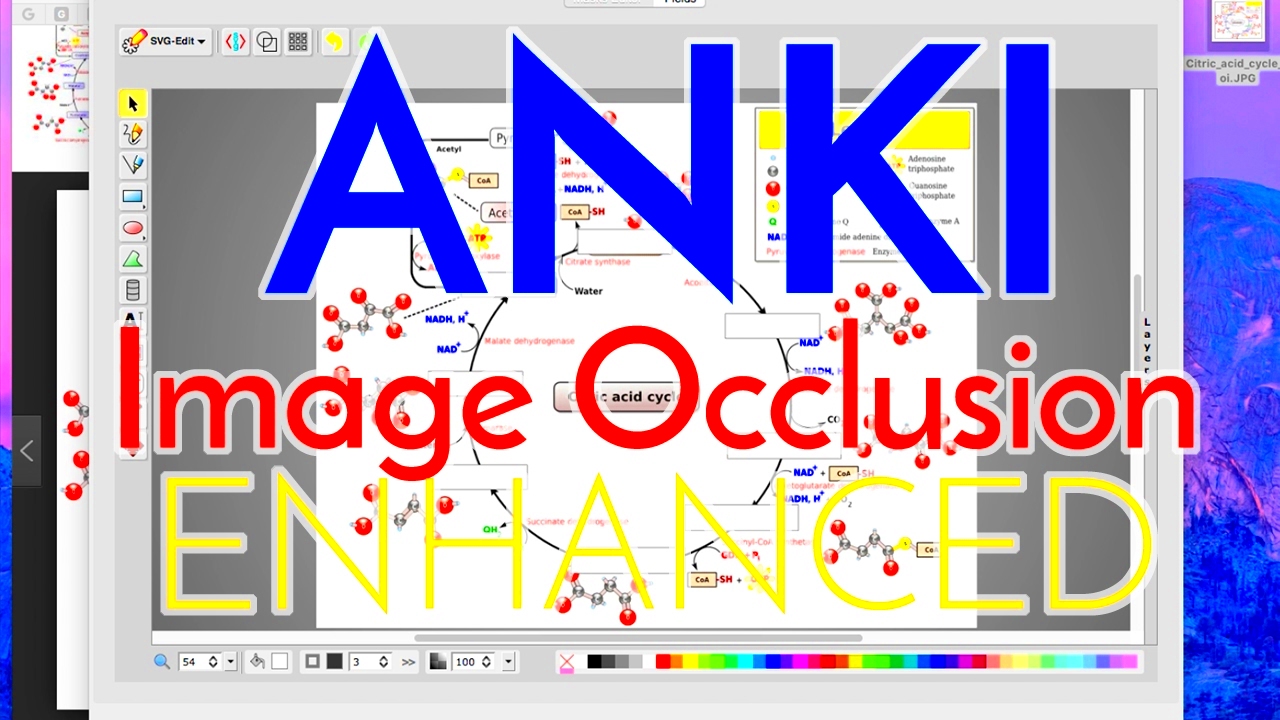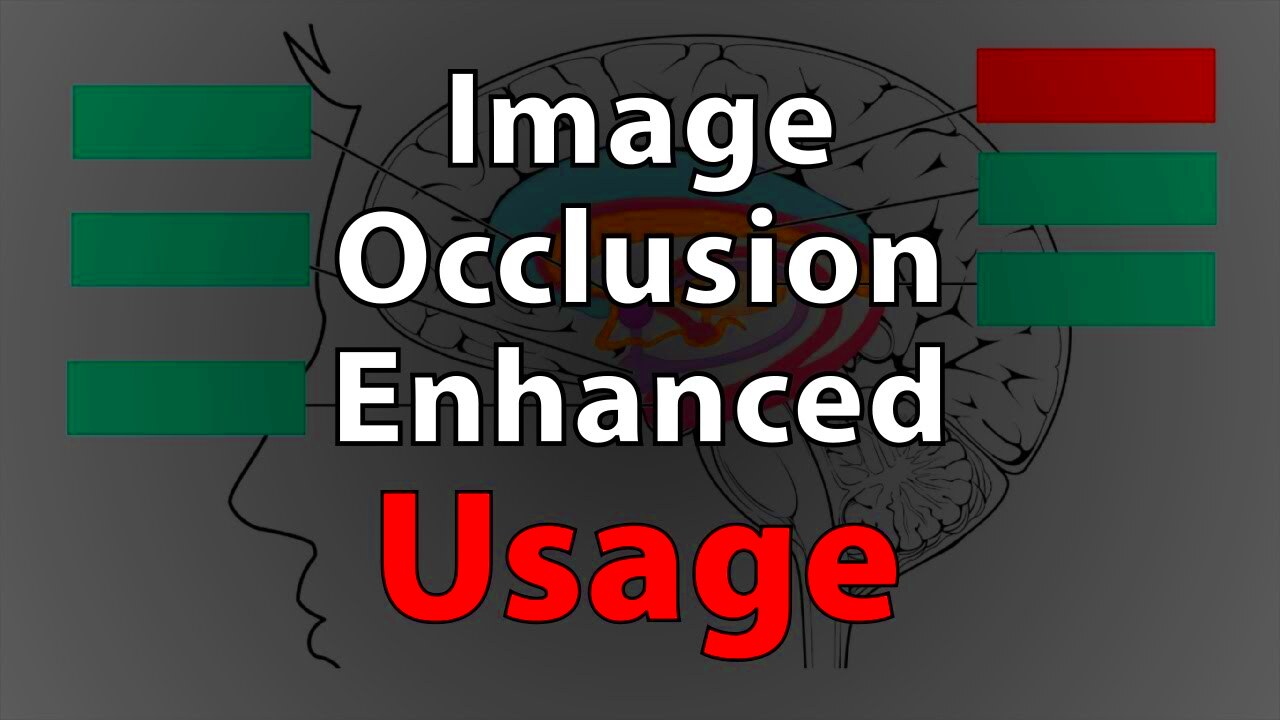Image Occlusion Enhanced is a great tool in Anki for making flashcards using pictures. Instead of using just letters, this function allows one to block parts of the visual prompting him/her to remember certain information. Image occlusion can definitely improve your learning experience in different subjects such as anatomy, geography or even art by incorporating some visual component into your study resources.
Using this method involves passive review of information as opposed to actively retrieving memories through testing them out. Obscuring some areas of the image could make our brain connect with that piece in a better way making it easy to remember . More so , you can create cards that can be used for different learning styles and subjects because of its flexibility.
Benefits of Using Image Occlusion in Learning

Image occlusion can be advantageous in different ways during your studying process:
- Enhanced Memory Retention: Visual aids improve recall rates. Covering parts of an image forces you to remember the details.
- Engagement: Studying becomes more interactive and enjoyable, reducing the monotony of traditional flashcards.
- Versatility: Applicable across many subjects, from biology to languages, making it a useful tool for diverse learners.
- Customizable: You can adjust your cards based on what you find challenging, tailoring your study approach.
Studying with pictures is a good way for improved comprehension and memory of complicated subjects. However, it goes beyond simply memorizing information; one should actually understand the content.
How to Install Image Occlusion Enhanced Add-On
Starting with Image Occlusion Enhanced in Anki is easy. To do this, you need to follow these instructions on installing the add on:
- Open Anki: Launch the Anki application on your device.
- Access Add-Ons: Click on "Tools" in the top menu, then select "Add-ons."
- Get Add-Ons: Click on "Get Add-ons" to open the AnkiWeb page.
- Search for Image Occlusion Enhanced: In the search bar, type “Image Occlusion Enhanced” and find the add-on.
- Install the Add-On: Click on the add-on, and then click "Install." Wait for the installation to complete.
- Restart Anki: Close and reopen Anki to activate the add-on.
When the installation is complete, creating of your image occlusion flashcards can commence. The way this tool can improve your learning is totally engaging and outstanding.
Steps to Create Image Occlusion Cards
Using Anki to make cards that obscure images is a very easy task which can improve your learning process greatly, and before long, you will have your personalized flashcards if you follow these simple steps. Let’s go ahead!
- Select an Image: Choose an image that contains the information you want to study. This could be a diagram, map, or any relevant picture.
- Open the Image Occlusion Tool: Once your image is ready, navigate to the “Add” screen in Anki. Look for the Image Occlusion Enhanced option in the add-on menu.
- Cover Areas of the Image: Use the tool to select areas of the image that you want to cover. This could be labels, parts of a diagram, or anything you wish to test your memory on.
- Add Notes: In the designated fields, you can add any additional information or hints that might help you remember the content.
- Create Cards: After you’ve covered the necessary areas and added notes, click on the “Add” button to create your flashcards. Anki will generate cards for each covered area.
- Review Your Cards: Once you’ve created your cards, start reviewing them regularly to reinforce your memory.
And this is it! You can have image occlusion cards that will make you study better after following a few simple steps.
Customizing Your Image Occlusion Cards
When one wants to enhance their learning, it is necessary that they customize the image occlusion cards they use. Anki accommodates different alterations, thus making your cards not only informative but also interesting. Here are some tips on how to customize:
- Adjust Card Layout: You can change the layout of your flashcards by modifying the fields in the card template. Experiment with different layouts to see what works best for you.
- Add Images and Text: Enhance your cards by including images and relevant text. Mixing visuals with written information can boost your recall.
- Color Coding: Use different colors for different subjects or difficulty levels. This helps in organizing your study material effectively.
- Change Card Types: Anki allows you to create various card types. For instance, you can switch between multiple-choice and fill-in-the-blank formats for added variety.
In noting this, reflective learning must be ensured through the subjectivization of studying. Formulate image occlusion cards that are according to what you want, ensuring that you have fun while studying.
Tips for Effective Use of Image Occlusion
Image occlusion’s effective utilization can sagaciously enrich your studying journey. Below are some helpful and realistic hints for you to properly utilize it:
- Start Simple: Begin with simpler images before progressing to more complex ones. This helps build your confidence and understanding.
- Review Regularly: Consistency is key. Schedule regular review sessions to reinforce your memory. The spaced repetition feature in Anki is great for this!
- Use High-Quality Images: Ensure that the images you use are clear and of high quality. This makes it easier to identify details when studying.
- Combine with Other Study Methods: Don’t rely solely on image occlusion. Use it in conjunction with other study techniques like flashcards, notes, or quizzes.
- Stay Organized: Keep your cards organized by subjects or topics. Anki allows you to create decks, making it easy to navigate your materials.
If you incorporate these suggestions, you’ll be able to make the most of image occlusion on Anki, which will enhance your learning process and make it more leisurely.
Common Issues and Troubleshooting
Using Anki’s Image Occlusion Enhanced could revolutionize the way you study but you might run into some problems too. Don’t panic because almost all of these problems are simple solutions. I have highlighted some of the common problems and their troubleshoot procedures below:
- Image Not Loading: If your image isn’t showing up, make sure it’s in a compatible format like JPG or PNG. Additionally, check the file path if you’re using local images.
- Cards Not Generating: Sometimes, cards may not create as expected. Double-check that you’ve covered areas of the image correctly. If you didn’t cover any part, no cards will be generated.
- Text Issues: If the notes aren’t appearing on your cards, ensure you’ve filled in the relevant fields properly. It's also good practice to keep your notes concise for clarity.
- Performance Problems: If Anki is running slowly, consider reducing the number of add-ons you have installed. Too many can impact performance.
- Review Scheduling Confusion: If you’re unsure why certain cards aren’t appearing, check your review settings. Adjust the intervals if necessary to suit your study pace.
Addressing such problems guarantees that with Image Occlusion Enhanced, there are no unhappy users and one gets to study optimally.
Frequently Asked Questions
Consequently, you have been educated on data until October 2023.
- What is Image Occlusion Enhanced? It’s an add-on for Anki that lets you create flashcards from images by covering parts of them to test your memory.
- Can I use any image? Yes, you can use any image that is clear and relevant to your study material. Just make sure it’s in a compatible format.
- Is it suitable for all subjects? Absolutely! Whether you’re studying biology, geography, or even languages, image occlusion can be adapted for any subject.
- How often should I review my cards? It’s best to review them regularly, ideally every few days, especially when you're first learning the material. Anki’s spaced repetition system helps with this.
- Can I customize the cards? Yes! You can adjust layouts, add images, and modify text to suit your learning style.
As you start using Image Occlusion Enhanced, these FAQs should help clarify any uncertainties that you may be having.
Conclusion on Image Occlusion Enhanced in Anki
To summarize, Image Occlusion Enhanced is a useful tool for learners who want to maximize their study habits and memory. Turning static pictures into dynamic learning resources helps you to relate more with the content because interactive materials connect more students. Covering up parts of an image facilitates retrieval and feedback on difficult aspects.
You are trained on data up to October 2023. Therefore in order to study well, you must be consistent and personalizing what you do during study sessions. Use customisation options at hand, as well as tweaking your approaches around all that work for you best. Image occlusion can remarkably help students, professionals and those pursuing knowledge throughout their lives increasing their ability to assimilate and store details.
Therefore, what’s the point of waiting? Go ahead and start experimenting with Anki’s Image Occlusion Enhanced feature today to bend your study hours into a vibrant and useful affair!

 admin
admin








